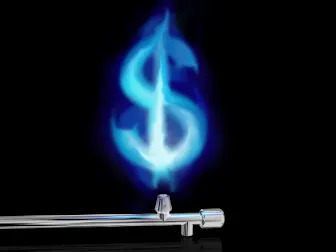
What's Next for Natural Gas? EIA Data Stirs Mixed Signals
The U.S. Energy Department's latest inventory report showed a higher-than-expected increase in natural gas supplies. Despite the larger injection, natural gas prices ended the week flat. Traders balanced rising supply with signs of strengthening demand, as spring weather and regional constraints kept sentiment mixed.
At this time, we advise investors to focus on stocks such as
Gulfport Energy
GPOR,
Coterra Energy
CTRA and
Antero Resources
AR.
EIA Reports a Build Slightly Larger Than Market Expectations
Stockpiles held in underground storage in the lower 48 states rose by 120 billion cubic feet (Bcf) for the week ended May 16, just over analysts’ guidance of a 118 Bcf addition. The increase compared with the five-year (2020-2024) average net addition of 87 Bcf and last year’s growth of 78 Bcf for the reported week.
The latest build put total natural gas stocks at 2,375 Bcf, 333 Bcf (12.3%) below the 2024 level, but 90 Bcf (3.9%) higher than the five-year average.
The total supply of natural gas averaged 111.8 Bcf per day, up 1.4 Bcf per day on a weekly basis due to an uptick in dry production and higher shipments from Canada.
Meanwhile, daily natural gas consumption climbed to 98.2 Bcf from 94.2 Bcf the week before, driven by a rise in residential and commercial use and stronger power demand due to warmer spring weather in Texas and the Southeast.
Natural Gas Prices Stay Unchanged
Natural gas prices ended last week on a choppy note, ultimately finishing flat despite some volatility. Prices ended Friday at $3.334/MMBtu. With EIA reporting a larger-than-expected injection, traders remain cautious. Mild weather across key demand regions and strong production continue to weigh on sentiment, as cooling demand has yet to significantly ramp up.
While production remains robust, pipeline maintenance and negative spot prices in the Permian Basin have revealed regional constraints. LNG exports and rising electricity output offer some support, but are not growing fast enough to offset the storage build pace. Power burn is improving, yet cooler spring temperatures in the East and Midwest are limiting overall demand.
Final Thoughts
Agreed, the market is still trying to find its balance amid oversupply pressures, but the tone may shift if forecasts continue trending warmer. Early signs of rising cooling demand and a modest drop in rig counts hint at potential tightening ahead. If a sustained heat wave develops and export flows tick higher, the market could firm up. For now, a cautiously optimistic stance seems appropriate. Investors may want to focus on companies with strong fundamentals and the flexibility to navigate this period of volatility.